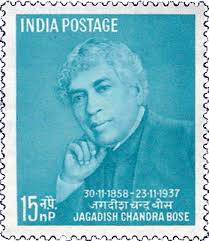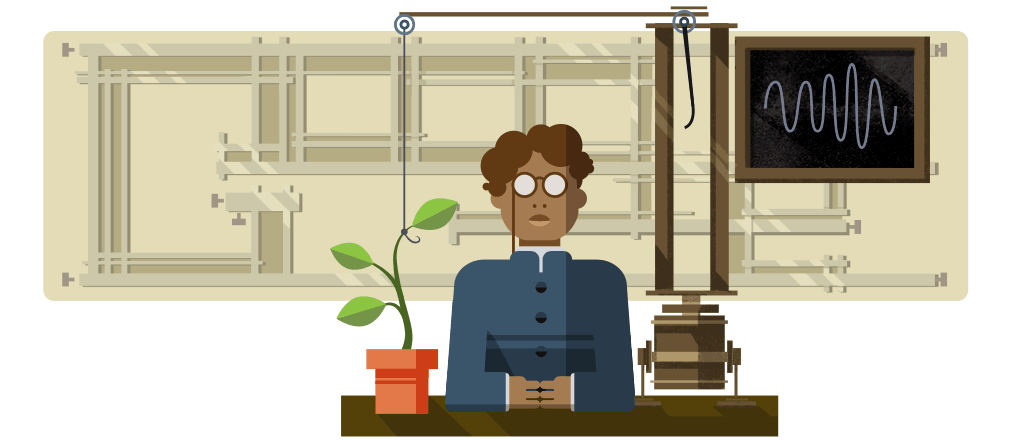
Jagadish Chandra Bose is being celebrated with a Google Doodle on what would have been his 158th birthday. (Google)
Scientist and writer Jagadish Chandra Bose is being celebrated with a Google Doodle on what would have been his 158th birthday.
“Sir Jagdish Chandra Bose was a master of scientific achievement with numerous accomplishments in various fields,” Google says. “Bose was to become known not only for his work in biophysics, but also his innovation in the world of radio and microwave sciences, ultimately inventing an early version of wireless telecommunication. As a testament to his numerous contributions to the field, a moon crater was named in his honor.”
Here’s what you need to know about Bose:
1. He Was Born in 1858 & Became Interested in Science While Studying Under a Jesuit Priest at St. Xavier’s College in Calcutta
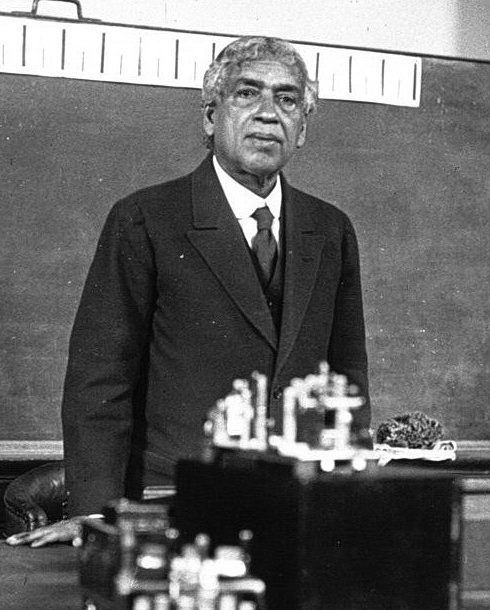
Jagadish Chandra Bose. (Wikimedia Commons)
Jagadish Chandra Bose, who also went by J.C. Bose and whose name is at times spelled Jagdish Chandra Bose, was born November 30, 1858, in present day Bangladesh, according to his biography on FamousScientists.org.
His father, Bhagawan Chandra Bose, was a Brahmo leader and civil servant. The younger Bose studied at the Hare School and St. Xavier’s School in Kolkata. He was then admitted to the University of Calcutta and studied at its affiliate, St. Xavier’s College, Calcutta.
While at St. Xavier’s, Bose developed his interest in science while studying under Jesuit priest Father Eugene Lafont, a Belgian missionary known for his knowledge of natural science, according to Swarajya.
“Being mentored and tutored by Lafont, helped Bose to hone his intellectual skills even more, and also develop an interest in Physics,” the magazine writes.
Bose graduated from the University of Calcutta in 1879 and later studied at Christ’s College in Cambridge.
He was married to Abala Das Bose, in 1887. She was a feminist who pushed for women’s education in India. She set up Nari Shiksha Samiti, which set up schools in rural areas.
Bose and his wife did not have any children.
2. He Is Best Known for His Invention of the Crescograph, Which Shows Plants & Animals Have Similar Reactions to Stimuli
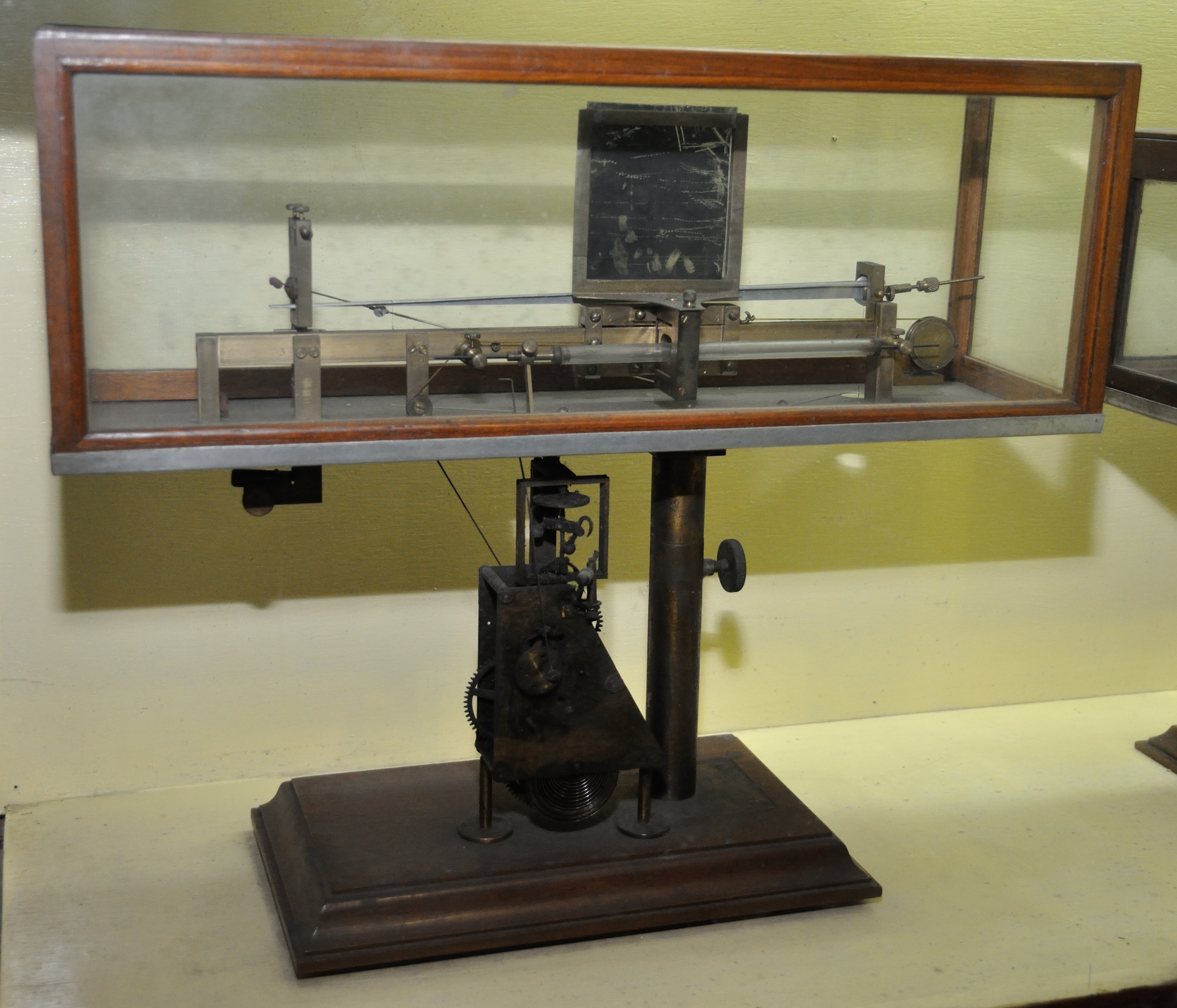
The crescograph, invented by Jagadish Chandra Bose. (Wikimedia Commons)
One of Bose’s most well known inventions, the crescograph, is featured in today’s Google Doodle.
“Bose’s investigations into nature included the invention of the crescograph – an instrument that measures movement and growth in plant life by magnifying it 10,000 times. He went on to demonstrate the similarities between animals and plants, particularly when it came to reactions to different environmental, electrical, and chemical influences,” Google explains.
According to Human Touch of Chemistry, “J.C. Bose switched his attention to plants, and how they respond to stimuli. How do they respond to the sun’s movement through the day? How do they react to wounds, pesticides, insects etc? He discovered that electrical signals passed between plant cells, making him wonder whether they had a nervous system. He invented a machine called the crescograph to study all this. He also discovered that they grew well if exposed to pleasant music!”
3. He Was Not Fond of Patents & Did Not Seek a Monetary Return for His Inventions
Bose was somewhat unusual in the scientific world because he did not seek to patent his inventions in order to make money, instead wanting the technology to be open to the world, according to the Vigyan Prasar Science Portal:
Bose was very much against in patenting his invention. He had resolved not to seek any personal advantage from his invention. He pursued science to only for itself but for its application to the benefit of mankind. In his Friday Evening Discourse at the Royal Institution, London, he made public his construction of the coherer. Thus The Electric Engineer expressed ‘surprise that no secret was at any time made as to its construction, so that it has been open to all the world to adopt it for practical and possibly moneymaking purposes.’ In 1901, one of the great manufacturers of wireless apparatus, approached Bose for signing a remunerative agreement as to his new type of receiver. However, Bose declined the offer. One of his American friends, Sara Bull (also known as Mrs. Ole Bull), was able to persuade Bose to file a patent application for his galena receiver. The application was filed on 30 September 1901 and it was granted on 29 March 1904 (US patent No. 755,840). However, Bose refused to accept his rights and allowed to lapse the patent.
4. He Was Also a Writer & Was Known as the Father of Bengali Science Fiction
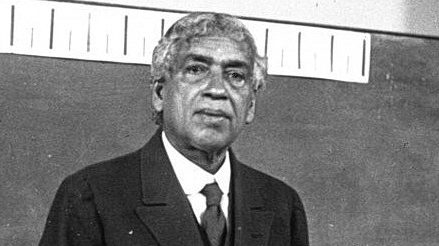
Jagadish Chandra Bose. (Wikimedia Commons)
In addition to his contributions to science, Bose was also a writer. He is known as the father of Bengali science fiction, according to India Today.
“His book Polatok Toofan (Absconding Storm) described how a cyclone could be averted by using a bottle of hair oil. It explained how oil changes the surface tension and holds water. His book Niruddesher Kahini (Story of the Untraceable) was the first major Bengali science fiction,” the news site says.
5. He Died in 1937 at the Age of 78 After Setting Up the Bose Institute in Calcutta
Bose, who was knighted in 1917, died on November 23, 1937, at the age of 78 in India after suffering a heart attack. His obituary in the New York Times was headlined, “Hindu Savant Originator of Theory Plants and Animals Have Similar Reactions.”
Before his death, Bose founded the Indian Institute in Calcutta, which was later renamed the Bose Institute.
The Bose Institute still exists today, 85 years after it was founded.
“The institute has evolved over the years into a multi-disciplinary research organization with stress on fundamental research in its pursuit of advancement of knowledge in Science and technology and at the same time developing highly competent and able scientific manpower for the country,” its website says.
In 1958, the Jagadis Bose National Science Talent Search Scholarship was created to give “select students with special aptitude for science and providing a scheme for counseling, conserving and helping this most precious resource, namely, human talent, which is necessary for building up the nation, by award of scholarship and otherwise.”
